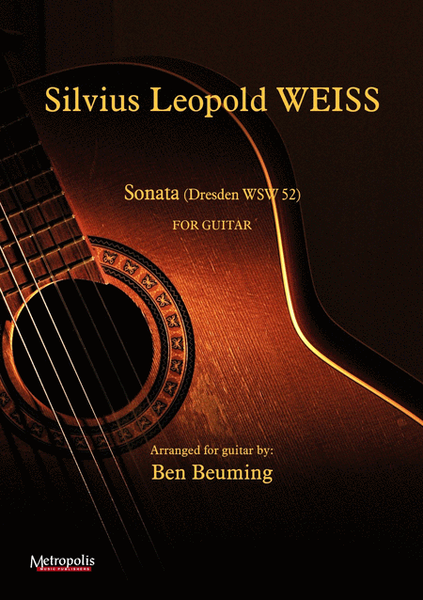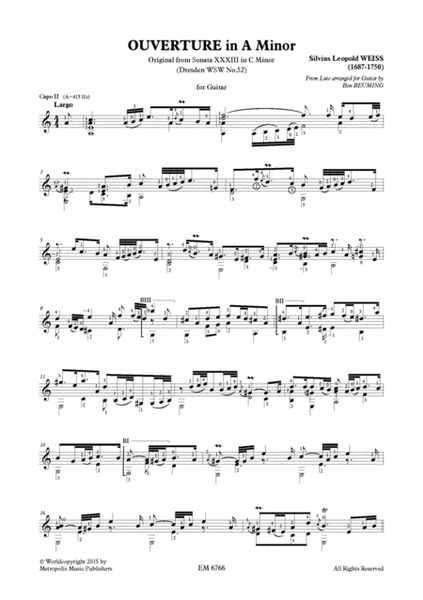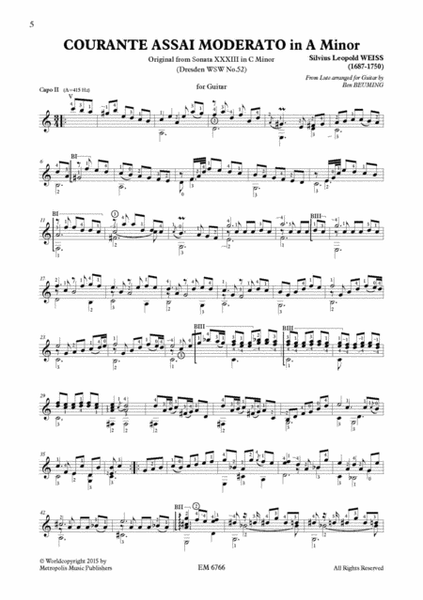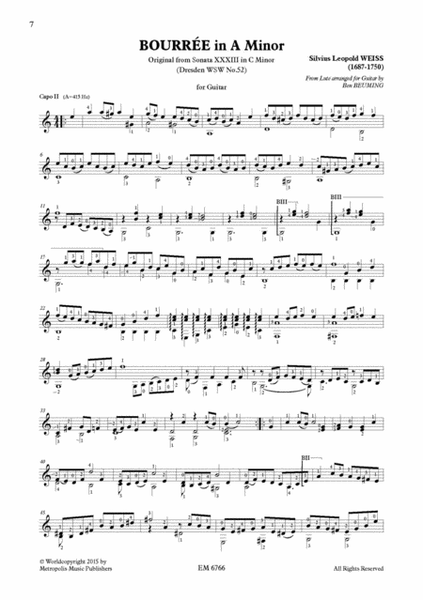Sonata XXXIII (Dresden nr.52) for Solo Guitar
-
Ships in 1 to 2 weeks
Details
Description
SKU: IS.G6766EM
Composed by Silvio Leopold Weiss. Arranged by Ben Beuming. Plucked - Guitar. Metropolis Music Publishers #G6766EM. Published by Metropolis Music Publishers (IS.G6766EM).ISBN 9790365067664.
This sonata (WeissSW No. 52, Dresden) is one of a new series of eight sonatas by Silvius Leopold Weiss arranged for the first time for guitar and published by Metropolis Music. Sonata XXXIII is a unique copy. It comes from a set of tablature manuscript volumes in the Sächsisches Landesbibliothek in Dresden (Ms. Mus. 2841-‐V-‐1). There are five volumes with a total of 34 sonatas of Weiss for solo lute. The sonatas are ordered by key and further sorted by size or complexity. Sonata XXXIII is in the fifth volume. It belongs to a group of large and mature Sonatas of the late ‘productive’ period of Weiss’s life, probably after 1740. The Sonata has six movements: Ouverture , Courante assai moderato, Bourée, Siciliana (a slow dance, but more cheerful than a Sarabande), Menuet, and it ends with a Presto. The Ouverture substitutes the traditional Allemande. It is more complex in structure, and includes a Largo, an Allegro (in the style of a Fugue), and a Vivace. The use of tempo indications for French dance movements is characteristic for the later work of Weiss. Originally, the Sonata is written in C minor, a key appropriate for playing a Baroque lute tuned in the D minor chord. However it is rather awkward with the guitar. For ease and effectiveness of playing, I have transposed the Sonata a minor third lower to A minor. I suggest using a capodastro to achieve the original pitch. Based on the present standard of A at 440 Hertz, the capo should be placed at the 3rd fret. However, during Weiss’s lifetime, it was more common in many parts of Germany to use a standard of A at 415 Hertz -‐ a semitone lower. So, to hear the pitch heard by Weiss and his contemporaries, the capo should then be positioned at the 2nd fret.




 Share
Share